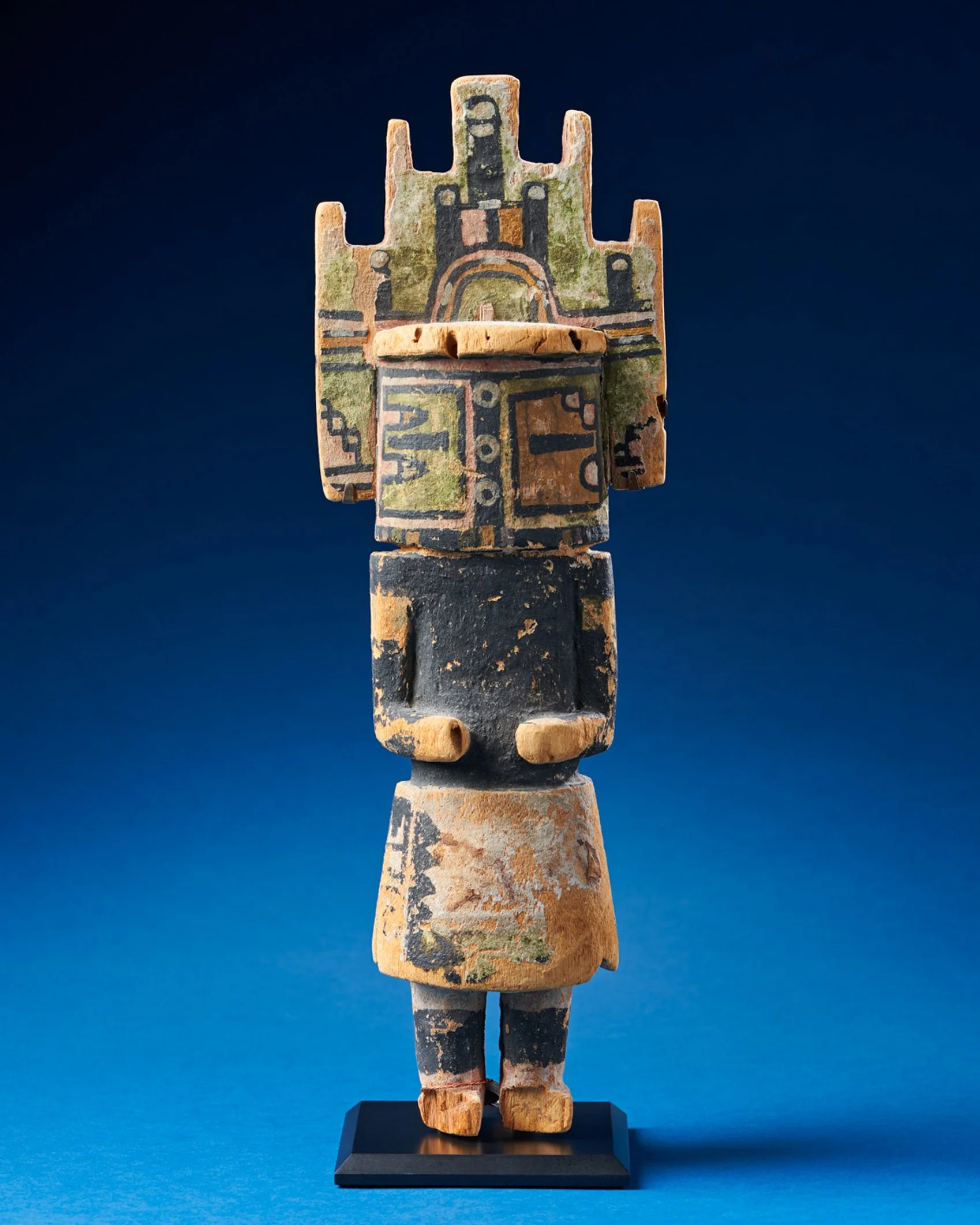Dig It - 10/6/24
Well Fellow Seekers, A question I'm often asked about early Hopi Kachinas is, how do I know it is as old as I claim it to be? Here is a doll that illustrates many of the attributes of a late 19th-century Hopi carving. This is a Hemis Kachina, named after the Rio Grande Pueblo of Jemez, where it originated. Many Pueblo peoples from the Rio Grande moved to the Hopi Mesas after the Pueblo Revolt of 1680, fearing Spanish reprisals. It is amazing that many of these Pueblos spoke totally unrelated languages but, by sharing a way of life and similar spiritual beliefs, were able to coexist and even thrive, at least for a while. But I digress.
Here are some early features that help us date this kachina to the late 19th century. First, all pigments are native and mineral; second, the kachina’s mask, or “head,” is very large in proportion to the body; the body is very simple with the arms tucked in closely; and lastly, the doll has an “up-carved” skirt separating from the legs, a trait seldom found in later dolls.
Well Fellow Seekers that about wraps it up for me. How about you? Two more notes: the doll was from Forrest Fenn’s collection, and it is for sale. Adios! -Lonesome
